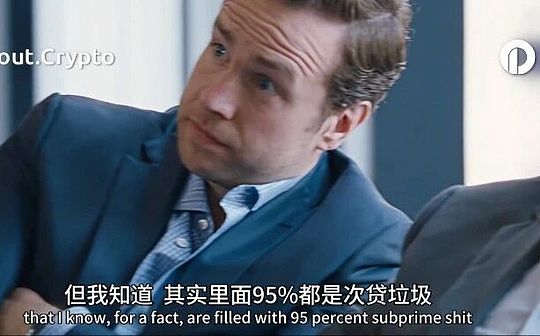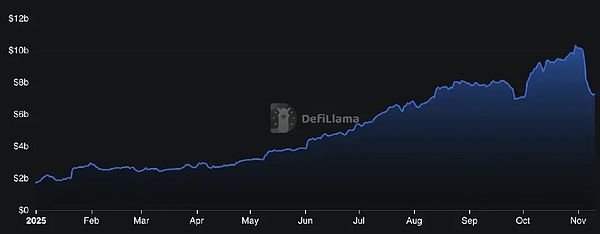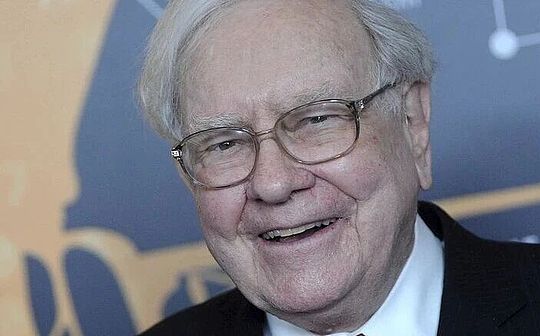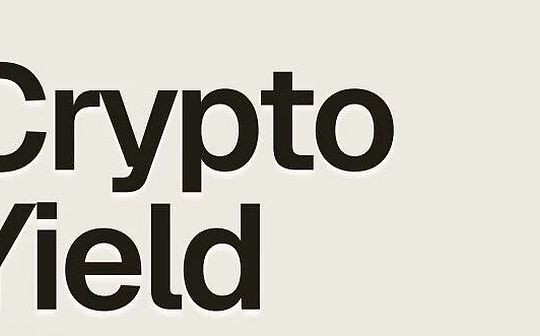
Author: Azuma

DeFi is once again at the forefront.
As the most vital narrative direction in the industry in the past few years, DeFi carries the expectation of the cryptocurrency industry to continue to evolve and expand. I firmly believe in its vision and am accustomed to deploying more than 70% of stablecoin positions to various on-chain interest-earning strategies, and I am willing to take a certain risk probability for this.
However, with the recent fermentation of many safety incidents,The collateral effects of some historical events and the inherent problems that were originally hidden underwater are gradually exposed, giving the entire DeFi market a dangerous atmosphere., so the author himself chose to collect most of the on-chain funds last week.
What happened?
Chapter 1: Opaque high-interest stablecoins
There were a number of noteworthy security incidents in DeFi last week.If the theft of Balancer is an unexpected and isolated case, then the successive unanchoring of two so-called income-based stablecoin protocols, Stream Finance (xUSD) and Stable Labs (USDX), has exposed some fundamental problems.
What xUSD and USDX have in common is that both are packaged in a model similar to Ethena (USDe) is a synthetic stablecoin that mainly uses delta-neutral hedging and arbitrage strategies to maintain anchoring and create returns.This type of interest-bearing stablecoin has become very popular during this cycle. Since the business model itself is not complicated, and there are phased success cases of USDe, various stablecoins that have appeared in batches have even tried combinations of the 26 English letters and the word USD.
However,The reserve and strategic status of many stablecoins, including xUSD and USDX, are not transparent enough, but stimulated by sufficiently high yields, such stablecoins still attracted a large inflow of funds.
In relatively calm market fluctuations, such stablecoins can still maintain operations, but the cryptocurrency market will always experience unexpected and huge fluctuations.Trading Strategy analysis said, the reason why xUSDLargely unanchored,The key reason is that Stream Finance’s opaque off-chain trading strategy encountered the exchange’s “automatic deleveraging” (ADL) during the extreme market conditions on October 11.mechanism, causing the original delta-neutral hedging balance to be broken, and Stream Finance’s overly aggressive leverage strategy further amplified the impact of the imbalance, ultimately leading to the substantial insolvency of Stream Finance and the complete de-anchoring of xUSD.
The situation of Stable Labs and its USDX should be similar. Although its official attributed the unanchoring to “market liquidity conditions and liquidation dynamics” in the subsequent announcement, considering that the protocol has never published reserve details and fund flow details in response to community requirements, and the suspected founder’s address mortgaged USDX and sUSDX on the lending platform to lend mainstream stablecoins, preferring to bear the interest rate cost of up to 100% rather than repay the abnormal behavior.The situation with this agreement may be even more dire.
The situation of xUSD and USDX has exposed serious flaws in the emerging stablecoin protocol model. Due to the lack of transparency, such protocols have obvious black box space in their strategies.Many protocols claim to be delta neutral models when they are announced to the public, but the actual position structure, leverage multiples, hedging exchanges and even liquidation risk parameters are not disclosed. It is almost impossible for external users to verify whether they are truly “neutral”, and they essentially become the party to which the risk is transferred.
The classic scenario where this type of risk occurs is when users invest in mainstream stablecoins such as USDT and USDC to mint xUSD and USDXWaiting for emerging stablecoins to earn an attractive rate of return, but once something goes wrong with the agreement (one part is divided into real accidents and fake ones), users will be in a completely passive position, and the stablecoins in their hands will be quickly destabilized under the stampede of panic. If the agreement is strict, it may use the remaining funds to make compensation (even if the compensation is paid, the order of retail investors is often the lowest). If not, it will just run away and let nothing happen.
However, it would be unfair to kill all delta-neutral interest-bearing stablecoins with one stroke.From the perspective of industry expansion, emerging stablecoins that actively explore diversified income paths have positive significance. Some protocols represented by Ethena will make clear disclosures (Ethena’s recent TVL has also shrunk significantly, but the situation is different. Odaily will write another article to expand on this later). But the current situation is that you don’t know how many protocols that have not disclosed or have insufficient disclosure have experienced problems similar to xUSD and USDX——When I wrote the article, I could only give you the benefit of the doubt, so I could only use the “Thunderstorm” agreement as an example. However, from the perspective of the safety of your own position, I recommend that you give the benefit of the doubt.
Chapter 2: Lending Agreement and Capital Pool “Curator”
Some people may ask, can’t I just stop playing with these emerging stablecoins?This leads to the two main protagonists in the second half of this round of DeFi systemic risks – modular lending protocols and Curator(The community seems to have gradually become accustomed to translating it as “manager”, and this translation will be used directly below).
In short,Professional institutions such as Gauntlet, Steakhouse, MEV Capital, and K3 Capital will serve as managers to encapsulate some relatively complex income strategies into easy-to-use capital pools on lending protocols such as Morpho, Euler, and ListaDAO, allowing ordinary users to deposit mainstream stablecoins such as USDT and USDC on the front end of the lending protocol with one click to earn high interest rates., and the manager will determine the specific interest-earning strategies of the assets at the back end, such as allocation weights, risk management, rebalancing cycles, withdrawal rules, etc.
Because this type of capital pool model can often provide more substantial returns than classic lending markets such as Aave, the model naturally attracts funds.Defillama shows,The total size of the capital pool operated and maintained by major managers has grown rapidly over the past year. It once exceeded US$10 billion at the end of October and early this month, and is still tentatively reported at US$7.3 billion as of this writing.
The manager’s profit path mainly relies on performance sharing and capital pool management fees. This profit logic determines that the larger the capital pool managed by the manager and the higher the strategic return rate, the greater the profit will be.And since most deposit users are not sensitive to the brand difference of the manager, the choice of which pool to deposit often depends only on the APY number on the surface.This makes the attractiveness level of the capital pool directly linked to the strategy’s rate of return, so the rate of return of the strategy becomes the core factor that ultimately determines the manager’s profitability.
Under the business logic driven by profitability and the lack of a clear accountability path, some managers gradually blurred the safety issues that should have been considered first and chose to take desperate risks – “Anyway, the principal belongs to the user, and the profit is mine.”In recent security incidents, managers such as MEV Capital and Re7 allocated funds to xUSD and USDX, which indirectly exposed many users who deposited through lending protocols such as Euler and ListaDAO to risks.
The manager cannot bear the blame, and some of the loan agreements are also to blame.Under the current market model, many deposit users do not know much about the role or even the existence of the principal. Instead, they simply believe that they have just invested their funds in a well-known lending agreement to earn interest.The lending agreement actually plays a more explicit endorsement role in this model., and it has also benefited from the skyrocketing TVL achieved through this model, so it should have taken the responsibility of monitoring the managers’ strategies, but apparently some protocols failed to do so.
To sum up, the classic scenario of this type of risk is that users invest USDT, USDC into the fund pool of the lending agreement.and other mainstream stablecoins, but most of them don’t actually know that the managers are using funds to run interest-earning strategies, and they don’t know the specific details of the strategies. The back-end managers deploy funds into the emerging stablecoins mentioned in the previous part because of the interest rate; after the explosion of emerging stablecoins, the capital pool strategyfailed, and deposit users indirectly suffered losses; then, bad debts occurred in the lending agreement itself (it seems that it would be better if it was liquidated in time, but forcing the oracle price of the unanchored stablecoin to avoid liquidation would amplify the problem due to large-scale hedging borrowing), causing more user groups to be implicated…Along this path, risks are also being systematically transmitted and spread.
Why did it come to this?
Looking back at this cycle, the trading side has already entered hell difficulty.
Traditional institutions only favor a very small number of mainstream assets; altcoins continue to fall, with no bottom in sight; insider operations and machine programs are rampant in the Meme market; coupled with the massacre on October 11th…a large number of retail investors are accompanying or even losing money in this cycle.
In this context,Financial management, a seemingly more deterministic path, has gradually gained greater market demand., coupled with the milestone breakthrough of stablecoin legislation, a large number of emerging protocols packaged as interest-bearing stablecoins appeared in batches (perhaps these protocols should not be called stablecoins in the first place), throwing olive branches to retail investors through annualized yields of more than ten points or even dozens of points. Of course, there are also top students like Ethena among them, but it is inevitable that there will be a mixture of good and bad.
In the extremely involved interest-earning stablecoin market, in order to make the product’s yield more attractive——There is no need to achieve long-term sustainability, just maintain the issuance and exit of coins with better data——Some protocols will seek higher returns by increasing leverage or deploying off-chain trading strategies (which may not be neutral at all).
At the same time,The decentralized lending protocol and the manager perfectly solve the psychological threshold problem of some users regarding unknown stable coins.——”I know you are worried about depositing money into xxxUSD, but if you are depositing USDT or USDC, your position will be displayed in real time on Dashborad. Can you still be worried about this?”
The above-mentioned model has been operating reasonably well for more than a year, and at least there has been no large-scale thunderstorm for a long period of time.Since the market as a whole is in a relatively upward stage, there is sufficient room for basic arbitrage between futures and spot markets, and most interest-bearing stablecoin protocols can maintain relatively considerable yield performance. Many users have also relaxed their vigilance in the process.Double-digit stablecoin or capital pool yields seem to have become the new normal in financial management…but is this really reasonable?
Why is it strongly recommended to retreat temporarily?
On October 11, the cryptocurrency market suffered an epic bloodbath, with tens of billions of dollars liquidated.Wintermute founder and CEO Evgeny Gaevoy said at the time that he suspected some people running long-short hedging strategies had suffered serious losses, but it was unclear who had suffered the most.
In hindsight, the successive outbursts of so-called delta neutral protocols such as Stream Finance have partially confirmed Evgeny’s speculation.But we still don’t know how many mines are still hidden underwater.Even if they are not directly hit by the liquidation of the day, the rapid tightening of market liquidity after the 1011 big liquidation, coupled with the shrinking of basic futures arbitrage space due to the cooling of market sentiment, will also increase the survival pressure of interest-earning stablecoins.Various unexpected unexpected events often occur at this time, and because various opaque capital pool strategies often have complex intertwined relationships at the bottom, the entire market is prone to a joint situation where “one move affects the whole body.”
Stablewatch data shows that interest-bearing stablecoins experienced the largest capital outflow since the collapse of Luna’s UST in 2022 in the week ending October 7, with a total outflow of US$1 billion, and this outflow trend continues; in addition, Defillama data also shows that the size of the fund pool operated and maintained by the manager has shrunk by nearly US$3 billion from the beginning of the month.It is clear that funding has responded to the current situation with action.

DeFi also applies to the classic “Impossible Triangle” in the investment market—high returns, safety, and sustainability can never be satisfied at the same time.The current “security” factor is crumbling.
Perhaps you are accustomed to investing funds in a certain stable currency or a certain strategy to earn interest, and have obtained relatively stable returns through this operation for a long time in the past. However, even for products that always use the same strategy, their risk profile is not static. The current market environment is the window where the risk coefficient is relatively high and accidents are most likely to occur.At this time, it is better to be cautious and retreat at the right time or it is a wise choice. After all, when there is a small probability of happening to you, it is 100%.






